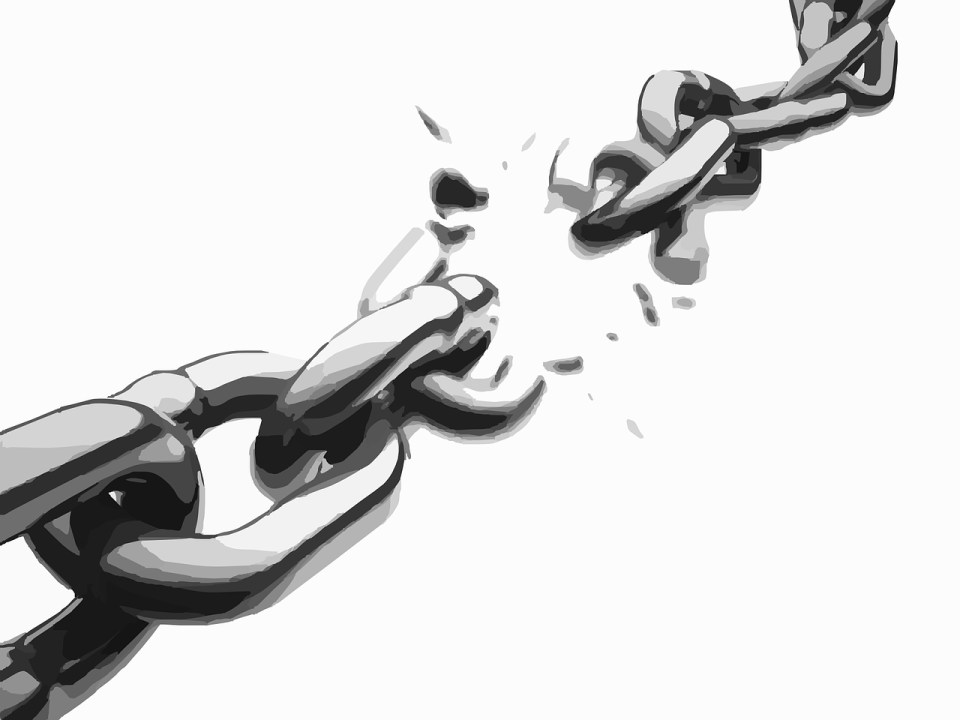Which is your Supply Chain’s weakest link?
Supply Chain Components
The weakest link in a chain is where the first breakdown happens.
Supply Chain Managers, have you figured out which is your weakest link? Let’s start with listing all the components of a supply chain:
- End-users, the customers – the people who enjoy the benefits of the product or service
- Last mile delivery – the entity that ensures the product or service reaches the customer
- Warehouses – large or small storage spaces where goods to be moved are aggregated for a short time
- Transporters – entities that provides facilities to move goods from one place to another – either from factories to warehouses, or warehouses to warehouses
- Factories – entities that manufacture goods from raw material or assembly products from raw materials or other parts
- Suppliers – entities that fulfil the raw material requirements of factories
- Suppliers’ Suppliers – entities that provide the raw material for next level of manufacture or assembly
These are the top-level components. There may many sub-components that perform the same function of a top-level component. They are connected by demand forecasts, RFPs, contracts and agreements, indents, orders, warehouse inventory, shipping information, payments and receipts – all the information that is required to set up and run the chain. These are assisted by activities – product development, operations, marketing, distribution, finance, and customer service.
What’s the problem?
What’s the catch in this scenario?
Imagine if these components of your supply work as independent entities. They work on their own and are only governed by the individual binding information between them.
The retailer looks at previous sales figures and arrives at an approximate sales forecast – quantities and time frames. He does not communicate forecast figures, but batches orders, creating large order quantities, to tide over the coming season’s demand (that he has guesstimated). The factories, warehouses and transporters have not received these forecast figures. They do their individual assessments and arrive at their own forecasts.
This results in:
- factories start production of the entire indented quantity, and fall behind
- warehouses are short of space for the incoming goods
- transporters do not have adequate vehicles
The retailers are now unable to deliver because, either they run out of stock and have to cancel orders, if the demand spikes up or they have excess stock, and have to apply discounts to prices to clear stocks.
There are many other scenarios – shipping breakdowns, calamities, inadequate infrastructure, etc. that can affect the supply chain and amplify the disruptions.
What’s the solution?
- Champion the cause for an integrated system. Influence every player in the chain to get on board
- Drive efforts to chalk out the entire network, end-to-end. Bring in experts and consultants
- Define performance metrics, derived from desirable outcomes across the supply chain
- Build a plan to address normal operations and all foreseeable outlier occurrences and incidents, both short-term and long-term
- Extract, transform and load data (ETL) into a suitable platform to increase visibility across the supply chain
- Implement metrics tracking and reporting
- Enable near-instant communications among all key personnel, across the chain
- Use data and predictive analytics to assess and forecast consumer demand, with plans to manage drops and spikes in demand
- Execute the plan and review results periodically. Make adjustments in operations and metrics, if required
- Repeat step 9
What are the salient points in the above list?
- Adopt technology – data and predictive analytics, IoT, and make all the data visible
- Adopt a robust communication mechanism
- Plan, do, review, adjust, repeat
At InnoBoon, our consulting practice is structured and is driven by purpose. The outcome of our consulting is a cost-effective, long-term solution that ensures a near-smooth supply chain, managed without stress.



